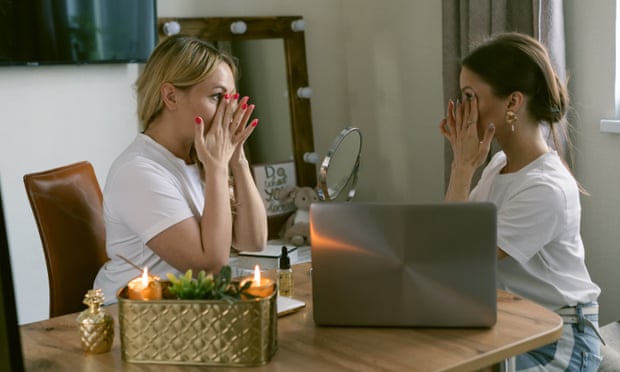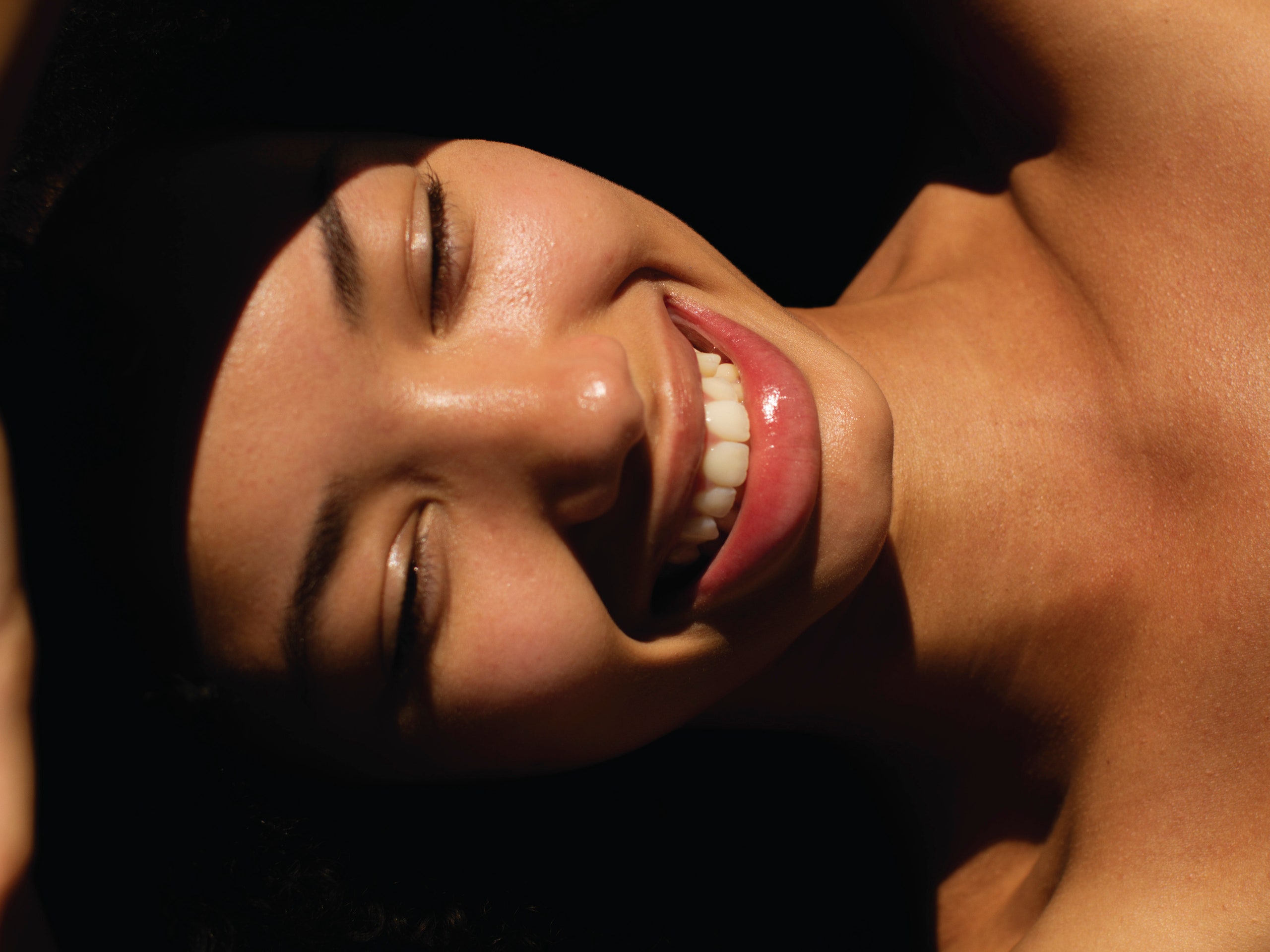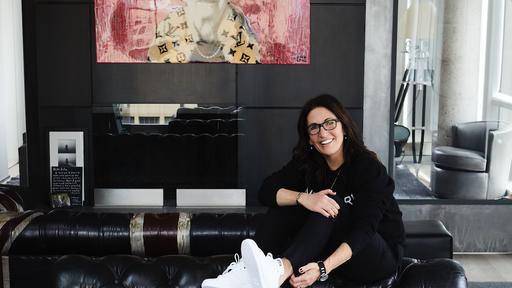Since the pandemic began, my Instagram feed has been filled with face workouts and face tools. Every other scroll, I see someone gua sha–ing their face for a lymphatic massage, or another blowing their cheeks Dizzy Gillespie–style to work their muscles. Then there are all the tools that are marketed towards me: a tiny gilded piece that looks like a paint roller with spikes, a micro-current tool that resembles a sex toy and sends shocks through the skin to tone muscles, and a thin metal stick with a ball at the end to stimulate different muscles as an exercise of facial reflexology and detox. The before-and-afters are particularly mesmerizing: nasolabial folds are lifted, undereye bags are gone, and jowls are smoothed. Call it the era of the au naturel nip-tuck.
I’ve no doubt been influenced: Every morning, I start with a general lymphatic massage from the collarbone up with a face oil (during which I can literally feel the fluid draining from my face). Next, I use a mix of lessons from the Glowbe app and various Instagram instructors to do an at-home 30-minute face workout, which includes me making bizarre facial movements and using my hands to aid the stimulation of muscles. (Gravity is crucial here: Never down, only up.) Then, I use a fist-size jade gua sha tool to drain any excess fluid, followed by a beauty roller that I use to further knead my face and chest. Finally, as the icing on the cake, I use a micro-current tool that sends satisfying, pinch-like shocks into my face. The end result reveals me to be a de-puffed, sharp-cheeked goddess, particularly ideal when Zoom seems to catch every unflattering angle.
I’m not the only one who has caught onto the trend. My coworkers are constantly texting about different variations of gua shas and face-zapping tools. It’s like collecting Pokémon cards: There is a new update on a tool every week, and we have to catch them all. My facial-workout obsession reached new heights during lockdown, when the lack of a commute meant I finally had the time to take 30 minutes out of my morning to do a meaningful amount of above-neck reps after my full-body fitness routine. This type of dedication is common among fans of FaceGym, a studio that offers face-sculpting sessions featuring special massage techniques. The company reports that its online sales (including both online classes and products) are up 700% year to date.
For those not quite ready to commit to a gym, there is a slew of Instagram accounts dedicated to facial massage and workout how-tos. Anastasia Burdog, 40, of @anyclass.faceonline boasts more than two million followers, and uses a tightening-and-release technique often referred to as “face gymnastics.” She offers her classes in Russian, but you don’t have to understand the language to get the gist of the instruction. (Plus, the before-and-after images will convert anyone into giving their visage the Liberace treatment.) Then there’s 30-year-old Karina Trigubchak of Ukraine, whose skin is as smooth as a baby’s palm. While she has only been publicly active on her account for about a year, she has been practicing facial exercise for more than five years. “The essence of my course is very different from massage or face fitness. Face fitness pumps the muscles of the face, which is essentially not correct,” she writes in Russian. “All problems, such as expression wrinkles, creases on the face, are due to spasmodic and shortened muscles. Therefore, my technique is aimed at relaxing the muscles of the face.” Call me a sucker, but whenever I have a moment, I find myself pinching my eyebrows à la Trigubchak in the hopes of widening my eyes.
The results of all this exercise are evident to me, but does the science back it up? I’ve heard skepticism around my very long morning facial routine, mostly from my mother and friends who are constantly questioning whether the results are permanent. But cosmetic and medical dermatologist Hadley King notes that there is evidence in several studies that these facial workouts, well, work out in the long-term. She does note, however, that those studies involved informed technique: “The subjects were following a specific and rigorous massage methodology and it wasn’t some just haphazard rubbing.” To that end, King suggests that better data is needed to support the magic of facial workouts. “We don’t understand all the mechanisms,” she says. “[But] there is some limited data that shows that there might be real results from these things.” While I wait for the additional assurance that my routine is backed by robust data, I’ll still be kneading my face every morning—that killer concave silver in my cheek doesn’t lie.






